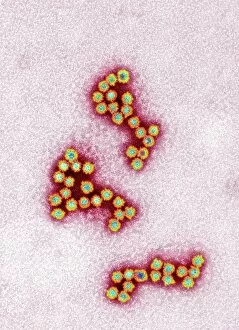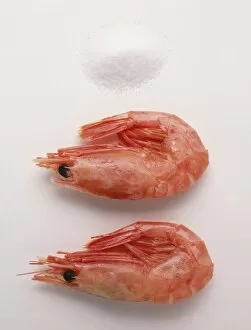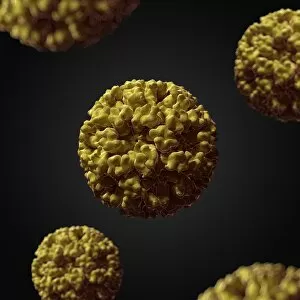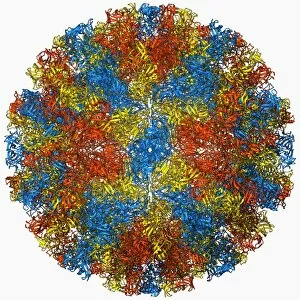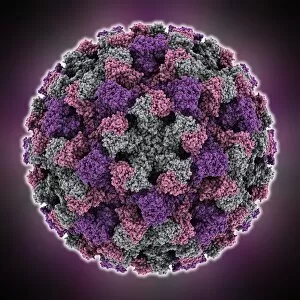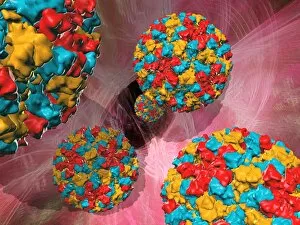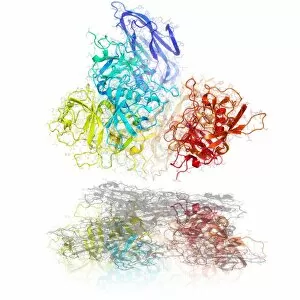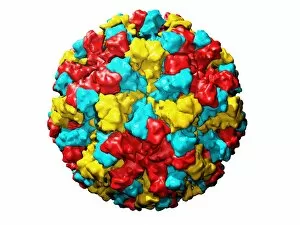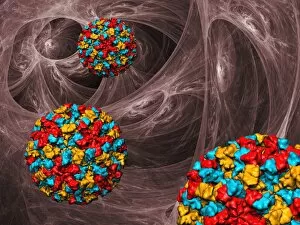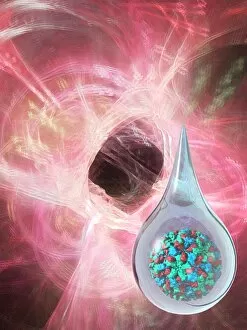Norwalk Virus Collection
"Unveiling the Intricate World of Norwalk Virus: A Close-Up Look at its Molecular Structure and Impact" In this captivating image
For sale as Licensed Images
Choose your image, Select your licence and Download the media
"Unveiling the Intricate World of Norwalk Virus: A Close-Up Look at its Molecular Structure and Impact" In this captivating image, we witness the mesmerizing beauty of Norovirus particles under a Transmission Electron Microscope (TEM). These tiny entities, resembling two pink shrimp or Malacostracans in close-up view, hold immense significance in understanding the notorious Norwalk virus. Displayed here is an artwork representation labeled as F007 / 7939, showcasing the distinctive features of the Norwalk virus. Its intricate capsid structure is depicted through a molecular model labeled as F006 / 9372. This visual representation allows us to delve into the complex architecture that enables this virus to wreak havoc on our health. The repetitive presence of TEM images further emphasizes the importance of comprehending these microscopic invaders. The repeated display of Norovirus particles highlights their prevalence and persistence within our environment. Norwalk virus, also known as norovirus, has gained notoriety for causing widespread outbreaks of gastroenteritis worldwide. It spreads rapidly through contaminated food or water sources and can lead to severe symptoms such as vomiting, diarrhea, and stomach cramps. By studying its molecular structure using advanced techniques like TEM and creating accurate models like F006 / 9372, scientists aim to decipher how this virus evades our immune system defenses and develops effective strategies for prevention and treatment. As we unravel more about these enigmatic norovirus particles under high magnification with TEM imaging technology, we inch closer towards developing targeted interventions against this resilient pathogen. Understanding its intricacies will empower us in safeguarding public health from future outbreaks caused by the elusive yet impactful Norwalk virus.

